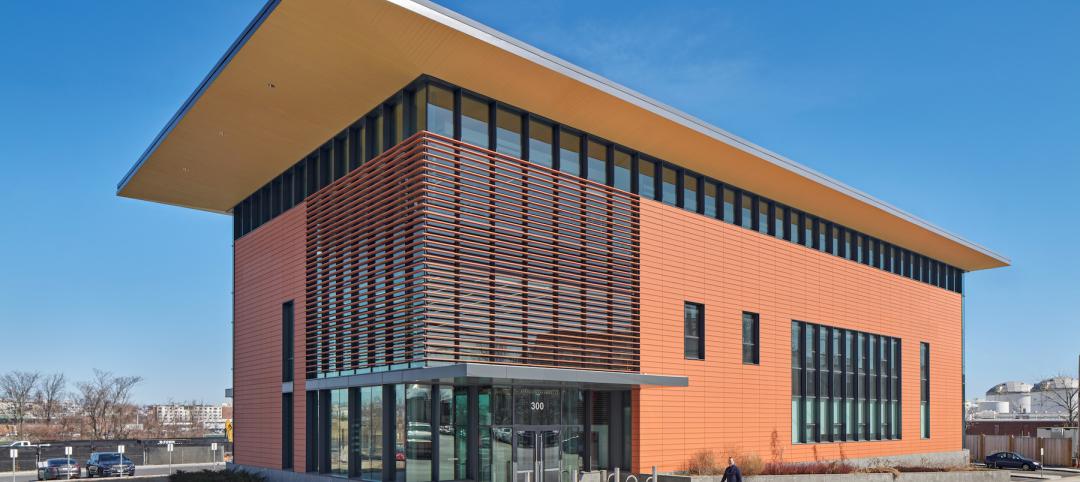In the heart of the Finger Lakes region sits the ambitious city of Ithaca, N.Y. Known for its diverse wildlife and natural beauty, Ithaca has turned heads with the start of its latest venture: Fully decarbonize and electrify the city by 2030.
In the summer of 2019, the City of Ithaca Common Council signed the Ithaca Green New Deal resolution—a unanimous decision for government-led decarbonization. The goals of the resolution include adopting 100% renewable energy by 2025, reducing vehicle emissions by 50 percent, and achieving community-wide carbon neutrality by 2030.
The undertaking that Ithaca has divulged begins with the electrification of 1,000 residential and 600 commercial buildings across the city. The end goal? Convert all 6,000 of Ithaca’s buildings into 100% electric ones. As the first city in the U.S. to propose doing so, what’s the catch? How can a small city accomplish such a feat?
What Makes an Electric City
“[Ventures like Ithaca’s] are clearly a doable scenario when industry and government align,” says Bill Klehm, chairman and CEO of eBliss, an eMobility transportation production company. With two decades of experience in the automotive industry, Klehm believes city-wide electrification efforts are achievable when the government responds to consumer demands.
Take the dawn of the automotive industry, for example. Cars were built before they had the infrastructure to properly support them. Consumers led the demand for vehicles—the government followed with roads. Where’s the tipping point for the switch to all-electric?
Fortunately, Ithaca’s mission is captivating enough for both public and private partnerships to arise. The almost-all-electric city has found enormous support from BlocPower, a green homebuilding technology company, and garnered investments from Alturus, Microsoft, and Goldman Sachs. Since 2019, Ithaca has created partnerships with over 200 local, national, and international organizations.
However, peering through the rose-tinted glasses, one must ask: Do we even have the capability to support this? According to Klehm, there are several challenges in store for Ithaca and other cities looking towards the electric future.
- Electric vehicle (EV) charging infrastructure will have to be significantly increased. Cars are one challenge—what about eBikes, public transportation, and delivery vehicles?
- Project leaders will need a detailed understanding of the city’s current traffic flow. This will determine which streets should be consolidated in favor of foot—or eBike—traffic, and which should remain for cars.
- There will need to be more availability of options for people moving around: Planned communities, mixed-use areas, urban condensing.
The rest includes a societal mindset shift—though it seems Ithaca fortunately has a leg up with its own community. Many in the U.S. are still skeptical of going all-electric, whether from the threat of increased taxation or feeling a loss of personal freedom. It will take disruptors like Ithaca to push against the norm, and see if others will follow its lead.
The ‘Democratization of Mobility’
Though Ithaca may be the first U.S. city to become 100% electric, it's not the first to push the limits. A Tempe, Ariz., neighborhood touts itself as the “first car-free neighborhood built from scratch in the U.S.”
Culdesac, a real estate developer and property manager, is building a mixed-use community that prioritizes—no, requires—biking, walking, and public transit. As a “first of its kind” community, Culdesac Tempe incorporates car-free streets (though still designed to accommodate EMS response) and a myriad of public amenities.
This living structure is reminiscent of the controversial “15-minute city,” a concept that instills excitement in some and fear in others. For the former, communities like Culdesac Tempe represent an idyllic lifestyle. In fact, adults who live in walkable neighborhoods are more likely to interact with their neighbors and have a stronger sense of community than people who live in car-dependent communities, according to a report by the Herbert Wertheim School of Public Health and Human Longevity Science at University of California San Diego.
This walkable urbanization typically attracts retired empty-nesters, work-from-home professionals, and the younger generation. This Gen Z demographic may become the biggest drivers for what Klehm calls “the democratization of mobility.”
“An eBike or scooter is usually the first vehicle a kid will ever drive,” says Klehm. “Young people will be the drivers of electric use—they’re used to it.”
As Millennial and Gen Z come further into positions of power, will efforts like Culdesac and Ithaca become commonplace, or will the fight to electrify persist?
Related Stories
Government Buildings | Jun 16, 2023
A police station in Boston attempts to bridge the divide separating law enforcement and the public
An investment in workers and residents, the new building is also more efficient and sustainable.
Engineers | Jun 14, 2023
The high cost of low maintenance
Walter P Moore’s Javier Balma, PhD, PE, SE, and Webb Wright, PE, identify the primary causes of engineering failures, define proactive versus reactive maintenance, recognize the reasons for deferred maintenance, and identify the financial and safety risks related to deferred maintenance.
Government Buildings | May 18, 2023
GSA launches first biennial construction award program
Today, the U.S. General Services Administration (GSA) announced the new biennial GSA Construction Award program, which is seeking submissions this summer. The program was created to honor outstanding achievements in construction, with a focus on quality and craftsmanship, collaboration and team dynamics, sustainability, innovation, and technology. The first Construction Awards ceremony will take place in 2024.
Mass Timber | May 1, 2023
SOM designs mass timber climate solutions center on Governors Island, anchored by Stony Brook University
Governors Island in New York Harbor will be home to a new climate-solutions center called The New York Climate Exchange. Designed by Skidmore, Owings & Merrill (SOM), The Exchange will develop and deploy solutions to the global climate crisis while also acting as a regional hub for the green economy. New York’s Stony Brook University will serve as the center’s anchor institution.
Urban Planning | Apr 12, 2023
Watch: Trends in urban design for 2023, with James Corner Field Operations
Isabel Castilla, a Principal Designer with the landscape architecture firm James Corner Field Operations, discusses recent changes in clients' priorities about urban design, with a focus on her firm's recent projects.
Market Data | Apr 11, 2023
Construction crane count reaches all-time high in Q1 2023
Toronto, Seattle, Los Angeles, and Denver top the list of U.S/Canadian cities with the greatest number of fixed cranes on construction sites, according to Rider Levett Bucknall's RLB Crane Index for North America for Q1 2023.
Contractors | Apr 10, 2023
What makes prefabrication work? Factors every construction project should consider
There are many factors requiring careful consideration when determining whether a project is a good fit for prefabrication. JE Dunn’s Brian Burkett breaks down the most important considerations.
Architects | Apr 6, 2023
New tool from Perkins&Will will make public health data more accessible to designers and architects
Called PRECEDE, the dashboard is an open-source tool developed by Perkins&Will that draws on federal data to identify and assess community health priorities within the U.S. by location. The firm was recently awarded a $30,000 ASID Foundation Grant to enhance the tool.
Sustainability | Apr 4, 2023
NIBS report: Decarbonizing the U.S. building sector will require massive, coordinated effort
Decarbonizing the building sector will require a massive, strategic, and coordinated effort by the public and private sectors, according to a report by the National Institute of Building Sciences (NIBS).
Government Buildings | Mar 24, 2023
19 federal buildings named GSA Design Awards winners
After a six-year hiatus, the U.S. General Services Administration late last year resumed its esteemed GSA Design Awards program. In all, 19 federal building projects nationwide were honored with 2022 GSA Design Awards, eight with Honor Awards and 11 with Citations.
















